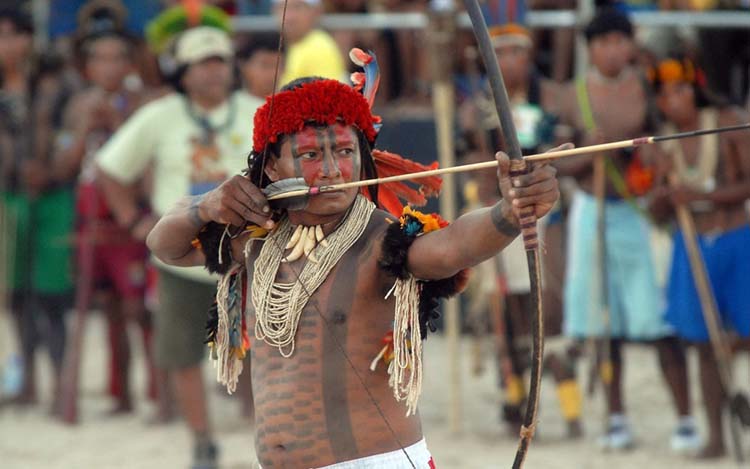Survival is not all about knowledge or acquired skills as it is having the right mindset where doubt or fear has no place. There may be no stronger proof of this than simply imagining how ancestors of Native Americans even managed to survive the last Ice Age 25,000 years ago. Living sustainably by protecting every resource to secure for their future generations is what subsequent generations, including ours, should have learned to survive as they did well. It’s fascinating how, despite nomadic ways, they hunted and came about maintaining their food supply, warm clothing and shelter to thrive through the harshest winters. Or how, by purely observing nature, they healed wounds and treated ailments. In this post, you’ll learn about the concept of community, sharing of resources and wisdom, and collective protection between tribesmen. This post may well serve to remind us of our debt of gratitude to them for making the wild a place hospitable for human existence. It is a far cry to think of all the modern technology we’ve grown so accustomed and reliant on, which could fail us one day to our detriment (or demise), having lost sight of basic skills we would have had otherwise to stay alive.
Native American Survival Skills: 25 Essential Survival Skills That Kept the Native Americans Alive – Alex Park
It is very easy to forget in our modern times of the internet and instant heat, cooling, food and shelter that people use to live a much simpler and much harder life before the advents of the modern comforts we take for granted every day. The Native Americans are the prime example of how people use to live off the land and survived the threats of nature with basic and cultivated survival tactics.
Native Americans crafted their own survival tools, built their own fires, foraged for their food and hunted their prey all by hand and it is astounding to think how well they were able to survive and thrive based on necessity alone. Would someone like you or me be able to do the same if we were put into such a hostile environment? Probably not but that it is why it is good to be aware of how the Native Americans were so deftly able to sustain themselves in an unforgiving North American wilderness.
The following list will highlight just 25 of some of the more interesting survival tactics commonly used by the tribes of the Native Americans of North America. Let this list be an insight into the lives of these fascinating people, an educational tool for our modern culture, a means of appreciating a society that is so rare and thin today and a reminder that the human spirit and will are much stronger than what we give them credit for.
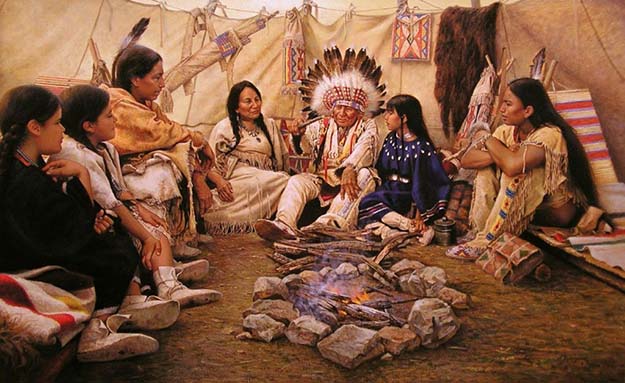
25. Community -The tribal mindset and lifestyle of the Native Americans of yesteryear plays a huge role into their survival tactics. As you probably are already aware, Native Americans distinguished themselves by tribes. You have probably already heard of the more common and prominent tribes like the Apache, Navajo and Mohican. The sense of community, sharing of resources and wisdom and collective protection between tribesmen cannot be understated when considering how Native Americans were able to survive.
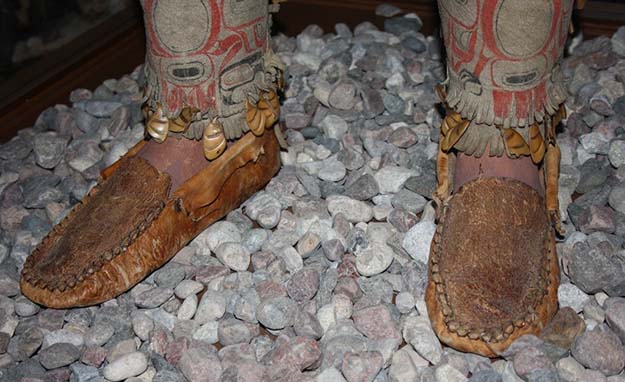
24. Footwear – If you have ever worked a day in your life with an improper pair of shoes then you know how important footwear is to comfort and bodily health. Footwear was integral to Native American survival and moccasins made of tanned leather and sewn together were common in North American tribes. Although designs and cuts differed from tribe to tribe features like rabbit pelt for added warmth and hardened rawhide for increased durability were common attributes of moccosins.
23. The Fox Walk – The fox walk was a method of tracking, traversing and hunting stealthily for Native Americans. This specific style consisting of wearing thin moccasins to feel the ground better, landing on the heel first and rolling your foot down, and traveling in lines to conceal your numbers was used in battle and in hunting.
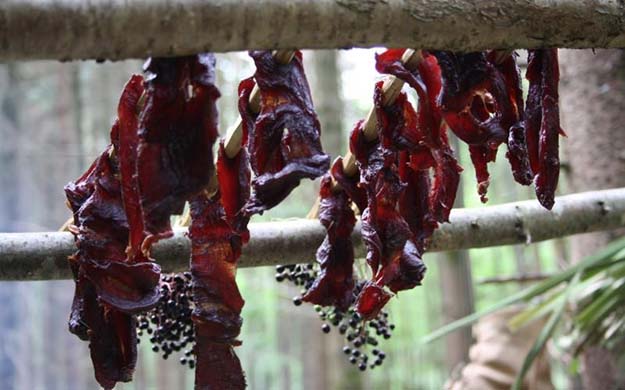
22. Preserving Meat – Meat got many Native American tribes through harsh winters butthere were no preservatives or refrigerators back then. Instead, Native Americans would preserve meat by cutting it into lean strips, eliminating fat and drying it in the sun. This is essentially what we know today as beef jerky. This thin, dried meat can keep for a very long time and was an essential food supply for Native Americans. We put together a guide to preserving meat in the wilderness.
21. Animal Hides – Animal hides were essential to Native American life and key to their survival. By honing a process of tanning and smoking, Native Americans were able to turn raw animal hides into moccasins, clothing and even shelter.
20. Natural Observation – Being able to tell what kind of weather was on the horizon was a huge asset for Native Americans and they used the natural signs of the environment to predict weather and to prepare accordingly. They would study the behaviors of animals who have much keener senses for weather than we do and read the clouds.
19. Using Plants – How Native Americans were able to discern the healing powers of certain plants is an unknown but we do know that these practices were handed down from generation to generation so it was probably a case of trial and error. They would use plants, herbs and other life found in nature to heal wounds and treat illnesses.
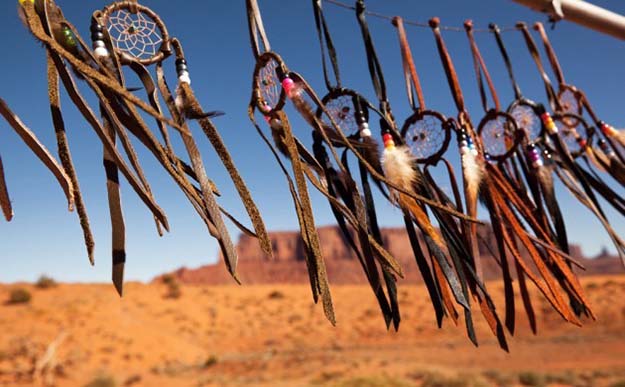
18. Artful Crafting – By turning the crafting of basic survival tools and shelters into works of art, Native Americans were able to make the essentials of life that would stand up to the rigors of their environment. Native Americans took their time to craft tools and shelters thus ensuring their durability and overall quality and helping them survive in harsh conditions.
17. Body Paint – Before hunts, Native American tribes would paint their bodies so that they could blend into the natural scenery as stealth was a very important aspect of survival in those times.
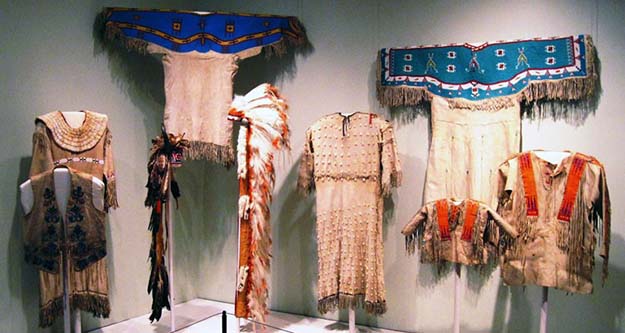
16. Clothing – Proper clothing is essential for anyone to survive in any situation and the Native Americans had their clothing crafting skills down to a science. They used animal hides and smoked leathers to create warm clothing for the cold winters. They also used certain colored clothing for stealth when hunting prey.
15. Camps – The Native Americans often built temporary camps for hunting excursions but they still needed to maintain a certain level of stealth. They would build these camps of earth-toned materials and animal skins and tuck them into the base of foothills or other strategic natural sites so that they would be hard to spot from a distance.
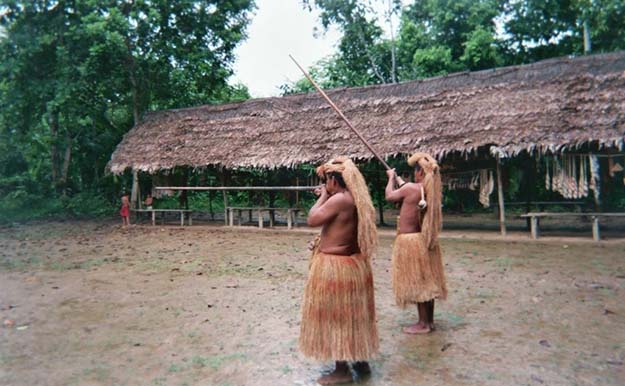
14. Blow Guns – These have become something of a novelty in today’s day and age but blow guns were actually used for hunting and in warfare by Native American tribes such as the Cherokee. They would fashion these weapons out of cane or reed. The reed would be hollowed out to a tube wherein a dart would be inserted and propelled by a strong breath towards a target. Blow guns were used primarily to kill small game like birds, rabbits and squirrels and were sometimes tipped with poison extracted from venomous snakes and even Gila Monsters.
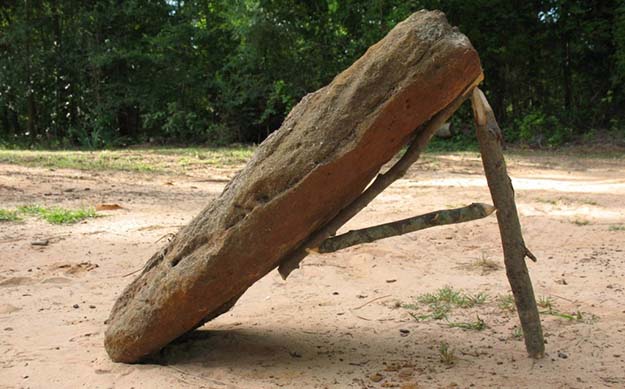
13. Deadfalls – Deadfalls are a kind of trap that were used by Native Americans to kill their prey. A heavy rock or log would be elevated by rope or a lever made of wood over a piece of meat or food to entice an animal. The deadfalls usually had a trigger that when the animal touched it, would activate the primitive trap and send the heavy object crashing down on them.
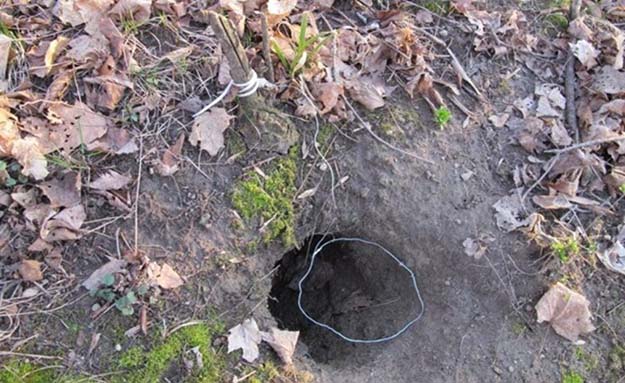
12. Snares – Trapping was one of the main ways that Native Americans caught their food and snares were among the most common types of traps utilized. A snare uses a vine that is tied in a loop and attached to a young sapling that is bent over and is fastened by tying it to a stick driven into the ground. The loop goes around a piece of meat to entice an animal and when the animal puts its head through the loop and tries to make off with the bait, the stick is dislodges and the loop turns into a noose around the prey’s neck and is suspended in the air as the sapling, free of its fastener, springs back into an upright position.
11. Trapping Pits -This is one of the more straightforward survival tactics utilized by the Native Americans. As the name suggests, this trap is simply a dug pit sometimes fitted with spikes at the bottom to kill or bleed the trapped animal. The dug pit would be covered up by branches and earth so that unsuspecting animals would walk over it and fall in.
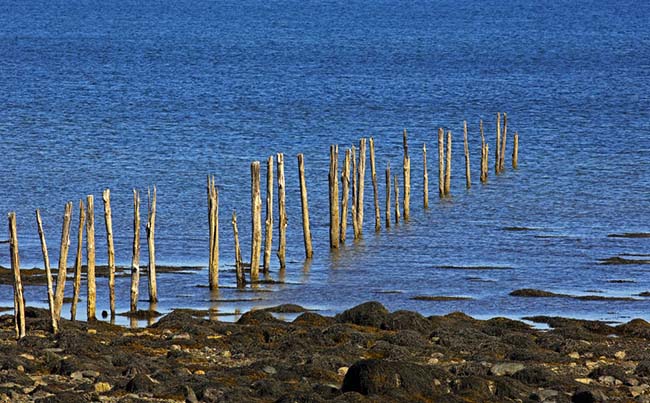
10. Fishing Weirs – Fish were an indispensible source of food for Native Americans and among the ways that they would catch fish were fishing weirs. Fishing weirs are essentially traps built by rock or wood that would lead fish migrating up or downstream to a corridor built to be narrow and ultimately trap the fish.
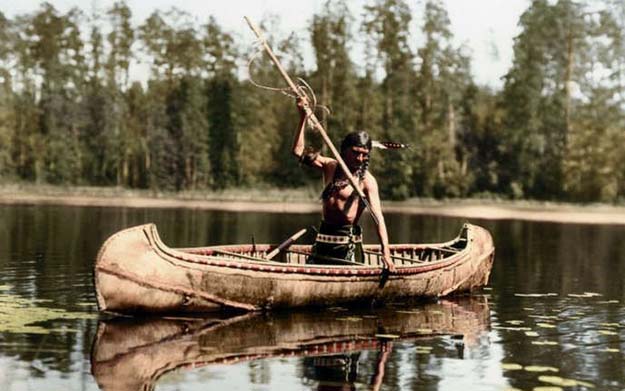
9. Spearfishing – Another way the Native Americans caught fish was by spearfishing. There were different methods of spearfishing employed depending on the time of year. In the winter when the lakes would freeze over, a hole was cut into the ice and a lure made of bone was used to entice the fish toward the hole. Then, a spear made of wood for the shaft and copper or bone for the tip punctured the fish.
8. Hunting Tactics – It may seem simple now that we look back but many hunting tactics devised by Native Americans were learned over the generations and used to help them survive. Simple tactics like reading the wind and standing downwind from a target increased the chances for success of a hunt dramatically.
7. Nomadic Practices – Not all Native American tribes stayed in one place. After the Spanish visitors brought horses to the great plains, many tribes such as the Blackfeet, Crow and Comanche adopted a nomadic lifestyle in order to hunt buffalo across the plains all year round. This supplied for them a stable food source and ensured, to a certain degree, survival.
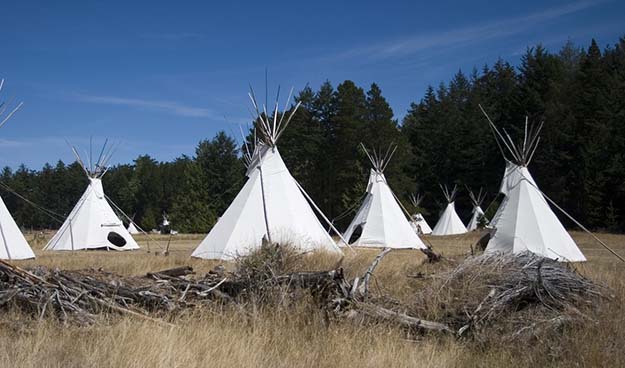
6. Teepees – Of course, there can be no survival without some form of shelter. The Great Plains Native Americans knew this very well and built teepees which are essentially tents. They were commonly made from buffalo hides and long wooden poles.
5. Dedicated Tribe Roles – Alost every aspect of Native American life was spurred by survival. This is even true of the gender roles of the Native Americans. The men were the hunters and to prevent any waste which could mean the difference between life and death in the North American frontier, the women were the cooks. They would prepare the meat that the men brought back immediately so as not to waste a single morsel and ensure that they had plenty of food.
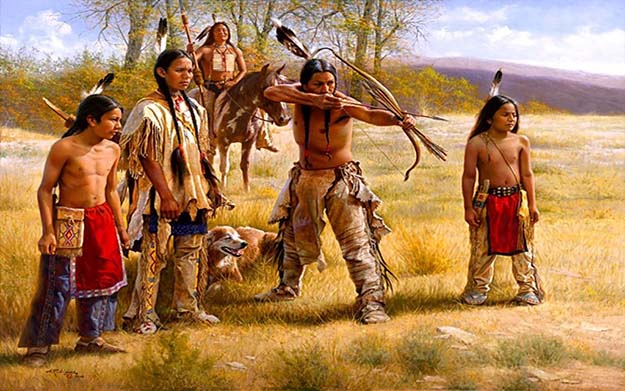
4. Bows – An indelible image that most people have of Native Americans is the bow and arrow which was vital for the survival of all tribes in North and South America. Most bows were fashioned out of wood and strengthened with animal tendons. Bow strings were made from animal tendon or yucca and similar natural fibers.
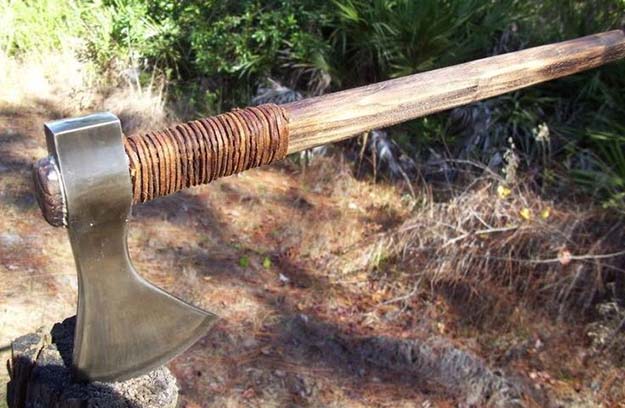
3. Axes – There are certain tools that are as essential now as they were in the days of the Native Americans for survival. Among them are axes. While Native Americans used axes for warfare, they were also used to chop wood that would be used for many different causes and to hunt prey.
2. Water – This may seem a simple and almost thoughtless aspect of survival but the fact of the matter is that if the Native Americans did not have sources of fresh water to draw from, they would have never survived. The plentiful rivers and lakes of the Americas helped sustain the Natives and they regarded water sources with great reverence.
1. Fire – There is no life without food and warmth and fire is number one on the list of 25 essential survival skills that kept Native Americans alive because it provided both. There were many methods of building fires among Native Americans but among the most common were striking stones like pyrites together to create a spark that would be caught be a pile of tinder. The friction caused by rubbing 2 sticks together also generated enough heat to combust tinder. Bow drills and fire pump drills were also common methods of starting fires. These contraptions used string wrapped around a stick and controlled by a bow to generate the heat needed to start a flame.
Though the methods and practices of Native Americans varied from tribe to tribe, the innovation for the sake of survival was universal. They borrowed methods form each other and created ones unique to their tribe. They even borrowed from foreign settlers and visitors. The Native Americans were a group of humans that had to learn how to adapt and we are all the richer and wiser for their survival efforts.
It is hard to separate the survival tactics we employ today from those introduced to us by the Native Americans. Thus, we owe a debt of gratitude to these people who learned how to tame the wild Americas and make them a place hospitable for human life.
Article by Alex Park | http://survivallife.com/native-american-survival-skills/
If you’ve heard or read about other survival skills, please share them in the comments below.

